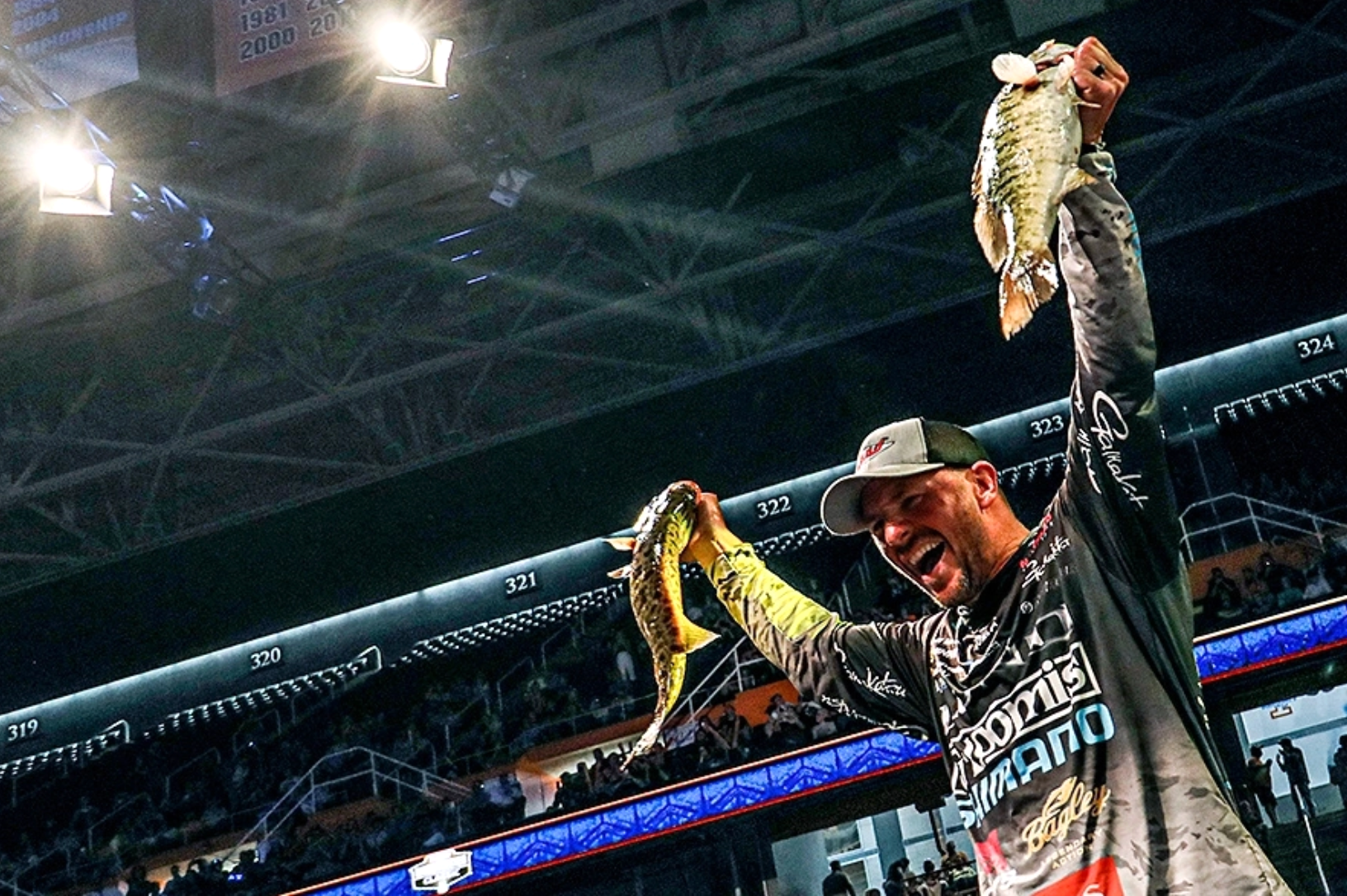
Backstory of the Bassmaster Classic-Winning Technique


Ladson, SC (May 01, 2023) – Thirteen hundred miles north of the Tennessee River; twenty years before Jeff Gustafson won the recent Bassmaster Classic— long before live sonar screens rewrote the rules of angling engagement— hanging a minnow was already boating tournament-winning bass in a big way.
Up 'til then, Gussy's Classic winning presentation was widely viewed as a niche technique—something that only worked up north for suspended or deepwater smallmouth bass. Perhaps most anglers still view moping—vertically hover-jigging with buoyant Jerk ShadZ™ superplastics—as super specialized, similar to the way anglers once regarded offshore bass patterns, in general.
Interestingly, a week after Gussy won the 2023 Classic, Aric Szambelan of Missouri State University finished just 3 ounces shy of winning the Bassmaster College Series qualifier at Cherokee Lake, Tennessee—you guessed it, moping a ¼-ounce jig and Scented Jerk ShadZ.
"The truth is, I caught fish with this same bait and method in at least half of last year's Bassmaster Elite tournaments," divulges Gustafson, who also tapped the technique to win the 2021 Bassmaster Elite event at the Tennessee River. The Keewatin, Ontario bass pro says he's now earned over half a million dollars with a jig and Z-Man Scented Jerk ShadZ— the prized presentation he calls his best bait of all time. He's won or nearly won numerous other derbies on Rainy Lake and Lake of the Woods, Ontario, all the way to Lake Champlain, New York, dating back almost two decades.

"Back in the early 2000s, Hall of Fame anglers Jimmy and Bill Lindner won back-to-back Fort Francis Canadian Bass Championships, targeting suspended Rainy Lake smallmouths," recalls Gustafson. Unquestionably, the Lindners pioneered the original moping technique, discovering untouched populations of suspended smallmouths in the process.
"At this point, given the success I've had moping on Canadian lakes all the way to Georgia and even Texas, I'd have to say it probably works in more places than it doesn't," he suggests. "Late spring, summer and fall . . . anytime you've got largemouths, smallmouths or spotted bass feeding on suspended smelt, ciscoes, alewives, shad or herring, or using structure in 15 to 30 feet, moping can unlock some crazy bites. In fact, many times, moping a jig and Jerk ShadZ is way more effective than a dropshot."
In other words, anyone who calls Gussy's method a niche pattern might first want to try it on their local lake.
History of 'Hanging a Minnow'
As Gustafson submits, the original moping method emerged in the early 2000s, inspired by ultra-competitive Canadian contests like the Fort Francis Canadian Bass Championship. Gussy, who won the event in 2013 and 2014, says the Canadian Bass Championship, alongside the Kenora Bass International on Lake of the Woods, comprise two of the more competitive, coveted bass trophies in North America. Each event swiftly fills 130-boat fields, attracting a collection of exceptional angling talent from across the continent.
"The year Jim and Bill Lindner won the first of their back-to-back Championships, we heard a lot of buzz about this new technique, fishing for suspended postspawn smallmouths," suggests Gustafson, referring to the 2003 and 2004 Rainy Lake bass derbies.

"Around that same time, we knew Alex Keszler was fishing vertically over deepwater in his tiller boat, catching big smallmouths, late spring through fall. But back at the dock, because everyone was super secretive, and hid their rods in storage, you didn't know what baits these guys were packing.
"Eventually, word got out that the Lindners and others were using fluke style softbaits rigged on 3/8-ounce jigheads with 90-degree eyelets," recollects Gussy. "The 90-degree angle deal is key because it helps position the jighook and bait's tail nice and horizontal, not vertical or tilted down. (More on the horizontal advantage, momentarily.)
"At first, we were using any type of 3- to 5-inch fluke style bait we could find. But it wasn't long before Keszler and other anglers discovered a new style of buoyant superplastic that hovered horizontal in the water, matching the natural swimming posture of suspended baitfish. Eventually, we found out guys like Keszler and Ted Stewner were actually sewing their ElaZtech baits to jigheads to create a permanent lure, preventing the bait from being pulled down the hook. Now, of course, a drop of Loctite Gel Control accomplishes the same advantage.
"Early on, Z-Man was making the baits for another company, which were exceptionally soft and just crazy durable. Like, you could fish all day with one bait—catching up to 100 bass— if you wanted. A few years later, Z-Man started making the Scented Jerk ShadZ under their own label, which quickly became the de facto moping bait among most of the serious tournament anglers."